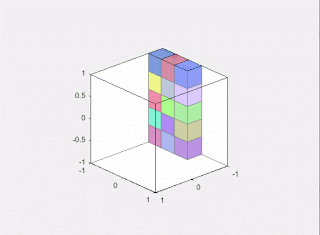the six dimensions of architectural design.
The six dimensions of architectural design.
They typically include spatial, functional, temporal, material, sensory, and cultural dimensions, which collectively influence the design and experience of a building or space.
Here's a step-wise explanation of each of the six dimensions of architectural design:
1. Spatial Dimension:
This dimension focuses on the arrangement and organization of spaces within a building or environment. Architects consider how spaces flow and interact with each other, ensuring a logical and functional layout that meets the needs of the occupants.
2. Functional Dimension:
The functional dimension involves understanding the purpose and activities that will take place in the designed space. Architects consider how the space will be used, the activities it will accommodate, and how different areas will support those activities effectively.
3. Temporal Dimension:
The temporal dimension pertains to how architecture responds to time. This includes considerations like the durability and longevity of materials, as well as the adaptability of spaces to changing needs over time. Architects need to design structures that stand the test of time and remain relevant.
4. Material Dimension:
This dimension involves the selection and use of materials in the design. Architects must consider the physical properties of materials, their sustainability, and how they contribute to the overall aesthetic and functionality of the space.
5. Sensory Dimension:
The sensory dimension takes into account the sensory experience of the occupants. Architects design with the senses in mind, including factors like light, acoustics, texture, and color. Creating a pleasing sensory experience enhances the overall quality of the space.
6. Cultural Dimension:
The cultural dimension considers the cultural and contextual aspects of the design. Architects must understand the cultural values, traditions, and historical context of the location where they are designing. This helps create designs that resonate with and respect the local culture.
These dimensions are interconnected and influence each other throughout the architectural design process. Architects need to carefully balance and integrate these dimensions to create spaces that are functional, aesthetically pleasing, culturally relevant, and enduring over time.
Designing something using the six dimensions of architectural design involves a comprehensive and iterative process. Here's how you might employ these dimensions:
1. **Define the Purpose and Scope**:
Start by understanding the purpose of the design and the scope of the project. Identify the activities that will take place in the space and the overall goals you want to achieve.
2. **Spatial Dimension**:
Begin by sketching out spatial layouts and arrangements. Consider the flow of movement within the space, how different areas connect, and the relationship between spaces. Create floor plans and diagrams to visualize the layout.
3. **Functional Dimension**:
Based on the activities identified, design spaces that cater to those specific functions. Determine the sizes and configurations of rooms, furniture, and equipment needed to support those activities effectively.
4. **Temporal Dimension**:
Choose materials and construction methods that ensure the longevity and durability of the design. Consider the lifecycle of materials, maintenance requirements, and how the design can adapt to changing needs over time.
5. **Material Dimension**:
Select materials that align with the functional and aesthetic aspects of the design. Consider factors such as the physical properties of materials (strength, flexibility, thermal performance), their environmental impact, and how they contribute to the overall design concept.
6. **Sensory Dimension**:
Plan for the sensory experience of the occupants. Think about how natural light will enter the space, how acoustics will affect the ambiance, the tactile qualities of surfaces, and how color and texture will influence the mood.
7. **Cultural Dimension**:
Research and understand the cultural context of the location. Incorporate elements that reflect and respect the local culture, history, and values. This could involve architectural motifs, materials, or design features that are culturally significant.
8. **Integration and Iteration**:
Continuously refine the design by integrating the dimensions. For example, you might adjust the spatial layout to enhance the sensory experience or modify material choices based on cultural considerations. Iteratively review and refine the design to ensure a cohesive and balanced outcome.
9. **Feedback and Collaboration**:
Seek feedback from colleagues, clients, and potential users. Collaborate with experts in different fields, such as engineers, interior designers, and cultural experts, to refine the design further.
10. **Finalize the Design**:
Once you've incorporated feedback and made necessary adjustments, finalize the design. Create detailed drawings, specifications, and 3D models that communicate the design intent clearly to builders and contractors.
11. **Implementation and Construction**:
During the construction phase, work closely with contractors to ensure that the design is realized according to your specifications. Address any challenges that arise during construction.
12. **Evaluation and Post-Occupancy**:
After the design is implemented, evaluate how well it meets its intended goals. Gather feedback from occupants to understand their experiences and identify any areas for improvement.
Throughout the entire process, these dimensions should be considered in a holistic manner. Adjustments made in one dimension might impact others, so it's essential to strike a balance that aligns with the project's goals and the needs of the people who will use the space.


Comments
Post a Comment